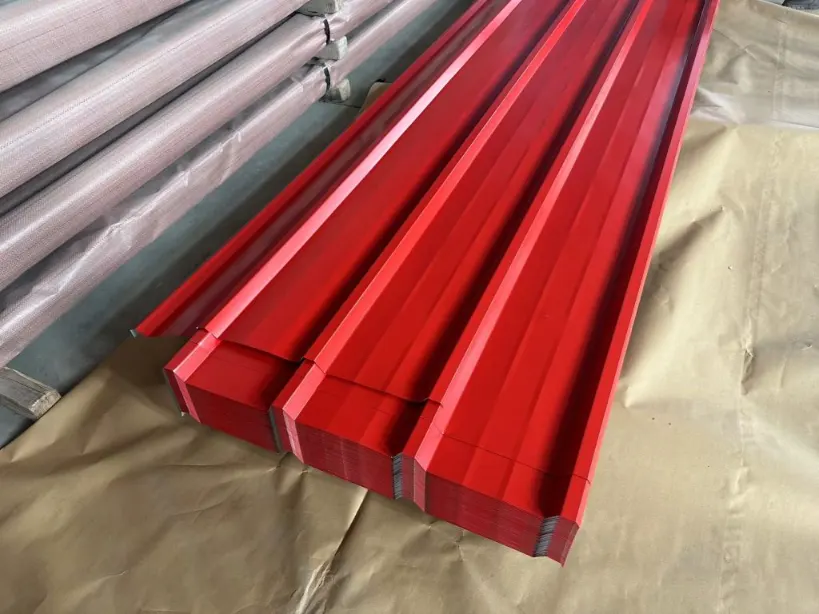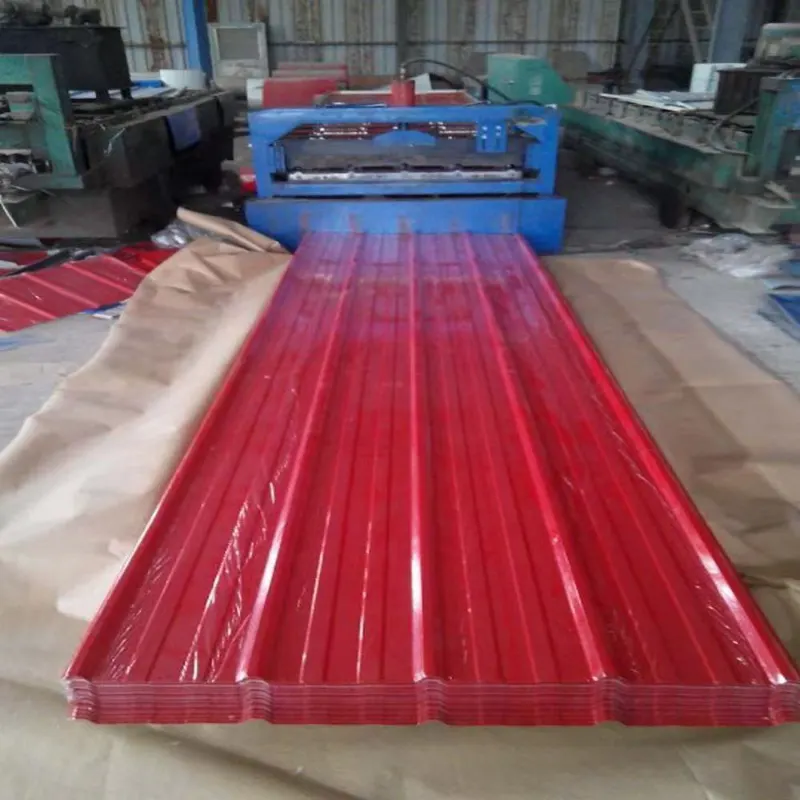
Project owners, contractors and importers have been paying closer attention to pre-painted and coated steel sheets in recent years. The market is not just getting bigger; it is also getting more specialized and more demanding about performance. If you work with roofing, cladding, appliances or prefab structures, these trends affect your choices more than you might think.
This article looks at the main global trends in the coated sheet market and, more importantly, what you as a buyer need to focus on. It also links these trends back to practical questions such as corrosion resistance, real service life and how a color coated sheet fits into your next project.
Why Is the Global Market for Pre-Painted Steel Sheets Growing So Fast?
The growth is visible almost everywhere. New logistics parks, industrial buildings and cold stores tend to use pre-painted steel sheet instead of plain galvanized or concrete. You can walk through a modern industrial zone and see entire blocks of roofs and façades finished in coated panels.
Growth Drivers You Should Pay Attention To
Several real drivers stand behind this:
- Fast-build industrial and warehouse projects
- Wider use of lightweight steel structures
- Demand for clean, uniform building exteriors
- Pressure to reduce structural weight and installation time
These factors make pre-painted steel attractive because you get structure and appearance in one material. For many users it has become normal to specify a Color Coated Sheet rather than a bare coil, especially for visible surfaces that must still look acceptable after years of sun and rain.
What New Coating Technologies Are Shaping the Market?
Coated sheet development is not only about color charts. Coating systems have improved in durability and consistency, and that directly changes what you can promise to your customers.
Better Paint Systems and Longer Service Life
Modern paint systems offer better resistance to UV, chalking and fading than older generations. Standard polyester has improved, and higher tier systems such as SMP and PVDF give longer life in coastal or high-sun regions. If you already care about corrosion resistance testing for prepainted steel, you have probably seen how different paint systems perform when panels sit outdoors for several years.
Improved Zinc and Alloy Options
There is also more choice in zinc and zinc-aluminum coatings. Buyers are asking for higher zinc coating classes for demanding environments, especially for roofs near the sea. This is closely related to questions like how to check zinc coating weight on steel sheets and how to read zinc data correctly when comparing suppliers. When you look at a typical technical sheet for a DX-grade Color Coated Sheet, the zinc range, paint thickness and standards are all listed, which makes this comparison much easier.
Which Industries Are Increasing Their Use of Pre-Painted Steel Sheets?
Construction is still the biggest user, but not the only one. As coating systems improved, more industries quietly adopted pre-painted steel sheets as a base material.
Industrial Buildings and Logistics
Large roofs and façades for factories and warehouses rely heavily on coated sheets now. These projects usually combine tight schedules with huge surface areas, so speed of installation and predictable panel quality matter a lot.
Home Appliances and Interior Projects
Appliance makers like pre-painted steel for machine panels, backs and side covers because it arrives with a clean surface finish and stable color. Interior contractors also use pre-painted panels for partitions and ceilings in commercial spaces where a smooth, easy-to-clean surface is needed.
Prefab Housing and Modular Architecture
Modular units and prefab buildings need materials that are light, strong and visually acceptable. Pre-painted steel fits that combination quite well. Here, a buyer often has to balance corrosion resistance, transport damage risk and cost in one decision.
What Should Buyers Focus On When Evaluating Global Suppliers?
Rapid market growth attracts more suppliers, and their quality levels are not all the same. If you deal with cross-border sourcing, the risk is not just price; it is variability.
Check Whether the Supplier Supports Full Specifications
A serious coated sheet supplier presents clear steel grades, zinc coating ranges, paint thickness, width and relevant standards. If a product table for a DX52 Color Coated Sheet shows thickness, width, zinc coating range and paint thickness in one place, you can quickly see if it fits your job rather than guessing from a color sample alone. Products like the DX52-based Color Coated Sheet give a good example of how such data can be presented in a practical way.
Pay Attention to Delivery Speed and Stock Levels
With more projects working on compressed time frames, buyers put higher value on delivery speed. A supplier with stable stock and fast shipment for common sizes reduces the chance that coils sit exposed at ports or job sites. That also supports real corrosion performance, not just numbers in a brochure.
Watch for Real Project Experience in Similar Environments
Suppliers may talk about long life, but what matters is performance on projects similar to yours. If you buy for a coastal roof, you should ask for references for that type of climate, not only inland warehouses. Feedback from these projects ties directly back to topics such as how to evaluate corrosion resistance of pre-painted steel sheets in real use, beyond lab tests and neat marketing photos.

How Can You Use Global Trends to Improve Your Purchasing Strategy?
These trends are not only market news; they can guide how you plan specifications. If your customers often ask about rust or fading, that is a sign that zinc levels and coating systems in your proposals might need an upgrade. If more clients require very specific colors or gloss levels, you may prefer suppliers with flexible coating lines instead of basic, single-line operations.
In short, the direction of the market suggests that buyers who know the basics of corrosion resistance testing for prepainted steel, and who can read a technical sheet without help, hold a clear advantage. Simple checks on zinc coating, paint thickness and basic test results already put you ahead of many competitors who only look at price. When you combine those checks with detailed product pages for items such as a DX52 Color Coated Sheet, you gain both market perspective and concrete numbers to work with.
Qingdao Sunrise New Material Co., Ltd.
Qingdao Sunrise New Material Co., Ltd. has built its business around steel and non-ferrous raw materials with a strong focus on coated products, including galvanized, galvalume and Color Coated Sheet coils for construction and industrial users. The company offers a broad range of grades and specifications for buyers who need to match different project environments, from standard industrial roofs to more demanding coastal or heavy-duty sites. With multiple production lines, export experience and a clear emphasis on quality inspection, it gives you a structured way to source coated steel rather than piecing orders together from small, inconsistent mills. For projects where corrosion life is important, detailed technical data for products such as the DX52 Color Coated Sheet helps you connect global market trends with real coil choices and more confident purchasing decisions.
FAQ
Q1: Why is global demand for pre-painted steel sheets increasing?
A: Demand is rising because more projects need lightweight, durable and visually clean materials. Industrial parks, logistics centers and prefab buildings all rely heavily on coated sheets, which combine structure and finish in a single product.
Q2: Which coating system works best for outdoor projects?
A: For general outdoor buildings, a good polyester system with sufficient zinc is often enough. In coastal or very sunny regions, higher grade systems such as SMP or PVDF are usually chosen to keep gloss and color more stable over time.
Q3: How can you compare suppliers from different countries?
A: Focus on how clear their specifications are. Look for detailed data on grade, zinc coating, paint thickness, standards and available tests. Then consider delivery speed, stock capacity and real project references, not just price.
Q4: Are higher zinc coatings always necessary?
A: No. High zinc levels make sense for coastal or industrial environments, while dry indoor areas can use lower classes without major risk. The key is to match zinc coating to the environment instead of applying a single rule to every project.
Q5: What should buyers keep in mind when planning next year’s coated sheet purchases?
A: Expect ongoing demand and more focus on long-term performance. Plan specifications with corrosion life, delivery reliability and technical support in mind, and use product data and simple checks on zinc and coating systems to make decisions rather than relying only on cost.






